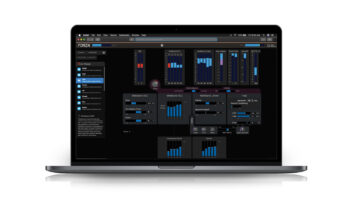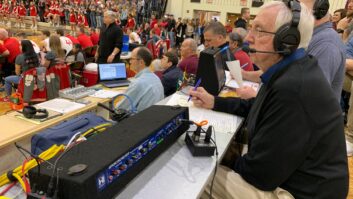The Music Industry Is Lobbying to Have Mandatory Content Protection Added to HD Radio
Last time we discussed how the FCC’s attempt to institute a backward-compatible content protection scheme for digital television was rebuffed by the courts, and how TV content providers have been working ever since to have the system reinstated.
As explained in that column, the venue for this effort has shifted from the FCC to the Congress, because the court ruling that overturned the DTV content protection scheme hinged on the FCC’s lack of an adequate congressional mandate to venture into this space.
Thus the TV content industry, led by the Motion Picture Association of America, has focused on getting an explicit statement from Congress that would permit the FCC to extend its regulation deeper into the consumer’s home media environment, as required by the proposed content protection system.
Recall also that this system maintains backward compatibility because it simply adds a flag – not encryption – to existing DTV broadcasts, and sets rules for how new consumer electronic equipment must behave when it sees content so marked. This “Broadcast Flag” approach calls for next-gen consumer DTV equipment to apply the encryption after reception, and for all other new digital video equipment to maintain this protection, such that Internet redistribution of flagged content is prohibited.
The Broadcast Flag system’s necessary incursion beyond the RF stage is what drew the attention of the courts, since it strays beyond the FCC’s default jurisdictional boundaries. Such expansion of the commission’s powers requires additional authority, which generally can only be granted by congressional order. So MPAA lobbyists and others have been working toward this end since the court ruling in May of this year. At this writing, they had not been successful in this effort.
We also noted in the previous column that record companies, as represented by the Recording Industry Association of America, have joined this endeavor, with the hope that any regulatory mandate on broadcast content protection could also apply to digital radio services.
With this background, you can see how the content industry’s ongoing effort to apply content protection to digital broadcasting has engaged IBOC through the back door. But the process of adding radio to the mix is not at simple as it may seem, for numerous reasons.
Why radio is different
First, if Congress eventually does provide specific authority to the FCC to enforce its Broadcast Flag rules for digital television (which many expect it will), the commission will be enacting a regime that has already passed through a thorough vetting process by the industry, including content owners, broadcasters and DTV equipment manufacturers. These rules will also utilize a technical delivery method that has been standardized by the Advanced Television Systems Committee, the U.S. DTV standards body.
In contrast, no such industry vetting or standardization discussions have yet occurred for content protection in digital radio, so simply providing FCC authority to extend the process to include content protection for digital radio could be seen as inappropriate or at least premature. The best the FCC could do is to continue the process started by its Notice of Inquiry on the subject of content protection, comments to which nearly all have been negative to date. (You may recall that the RIAA provided the only substantive comments to that NOI in support of the need for content protection in digital radio.)
Neither does the NRSC-5A standard address the subject of content protection, so the FCC has no technical recommendations to review or adopt on the subject. So the process of developing any rules regarding content protection in digital radio would take some time – probably multiple years, as the abovementioned process for digital television required.
Moreover, the RIAA is apparently seeking a broader scope of protection for audio content broadcast on digital radio than the Broadcast Flag rules provide for DTV content. Beyond the prevention of indiscriminate, mass redistribution via the Internet to which the DTV rules are limited, the RIAA seems to be calling for restrictions to individual consumer copying, home networking and search capabilities. (The last is intended to prevent consumers from programming their receiver equipment to automatically seek out particular songs broadcast via digital radio for permanent storage.)
So the inclusion of digital radio to any grant of authority for the FCC could bring with it an inherent escalation of scope for content protection rules, unless such grant were specifically limited by the language of the congressional statute.
Consider also that the Broadcast Flag rules only got as far as they did because they ultimately received widespread support from both the content and the broadcast industries, with the latter sector motivated in this direction due to concern that premium content would migrate completely from over-the-air broadcasts to the more secure digital cable and satellite TV delivery environments. In addition, each broadcast television network is now allied with a Hollywood studio, so policies are generally coordinated between the TV content and broadcast sectors.
Again, this is certainly not the case in the radio environment, where no fear of access loss to content exists among broadcasters, and no corporate alliances between broadcasters and record labels have been forged. (If anything, the recent payola flap has heightened the need for distance between these industry sectors.)
Therefore the music industry will likely be forced to drive this proposal unilaterally, without broadcaster support – and perhaps even overt opposition from some radio operators.
It is important to note in this context that the digital radio industry has been concurrently considering the voluntary addition of some type of content protection technology on multicast channels, in order to enable a terrestrial subscription radio or similar service in the future. Given this, it is unlikely that these quarters of the radio broadcast industry would willingly accept a mandatory framework for overall content protection in digital radio.
Another contextual element here is the simultaneous dust-up between RIAA and satellite radio over the new crop of storage-capable satellite receivers (see our column in the Oct. 26 issue). Again in stark contrast to the TV world, this implies that there is no content-industry preference for satellite radio delivery, despite its intrinsically more secure technology.
Incompatibility
Complicating matters further, some of RIAA’s recent actions on this issue appeared to prefer an encrypt-at-the-source approach, rather than a Broadcast-Flag type of system.
In other words, instead of simply marking broadcast content for downstream protection as the flag system does, RIAA suggested that all IBOC broadcasts (or at least those that include copyrighted music) be mandated to include full-time encryption of the digital broadcast signal, and that these signals only be entitled for legitimate decryption under circumstances of which the RIAA approved.
While they were not saying so directly, what the RIAA was asking for in this case could have stopped the HD Radio rollout in its tracks.
To be clear, from a purely technical perspective the encryption-at-the-source method is a simpler and potentially more effective content-protection system than the Broadcast Flag approach, but at this point it would have been impossible to implement in the U.S. digital radio format without orphaning legacy equipment.
In other words, encrypted IBOC transmissions would not be backward compatible to the current generation of IBOC transmission and reception equipment, not to mention their non-compliance with the interim FCC rules on digital radio. The encrypt-at-the-source approach therefore was unlikely to find much favor from regulatory, broadcast or CE sectors for application to terrestrial digital radio broadcasting, given that the HD Radio rollout was well underway.
The Consumer Electronics Association quickly reacted to the RIAA’s proposal, expressing strong opposition to the addition of content protection to digital radio. The CEA’s comments cited the protection as unnecessary and intrusive to consumers’ well-established rights. CEA also took particular offense to the encrypt-at-the-source provision, saying it was too late to be implemented in the fashion RIAA proposed due to the compatibility problems noted above.
The NAB had not yet reacted publicly on the matter as of November, but apparently had voiced private concerns to the RIAA on this plan.
Next steps?
Following that proposal, the RIAA soon learned what the rest of the radio industry already knows: For the inclusion of any technology in IBOC, all roads lead through Ibiquity Digital.
Reportedly the RIAA was somewhat taken aback when Ibiquity refused to add an overall encryption solution to the HD Radio system. This should have come as no surprise, however, given the fact that any inclusion of mandatory IBOC encryption at this point would have brought the HD Radio rollout to a screeching halt, rendering existing HD Radio equipment useless and causing a hiatus in the deployment while a suitable encryption system was developed, tested and approved.
During such a pause, much of the growing momentum toward HD Radio conversion likely would evaporate, and prospects for the format’s success would be severely curtailed. This is certainly not something Ibiquity or any early-adopting IBOC broadcasters and consumers would willingly accept, nor would it serve the American public, given HD Radio’s potential to improve the U.S. media environment.
So in its most recent actions, the RIAA apparently has backed off from its specific call for encryption at the source, instead moving to a more general call for some robust method of content protection.
This could still involve encryption at the source, but it could also include a more palatable (and backward-compatible) flag-based system. Given the incompatibility issues discussed above, the latter approach is far more likely to be ultimately preferred.
Yet even this liberalized RIAA stance could put a kink in the HD Radio rollout.
Consider that even if the RIAA’s proposal were accepted today, a mutually agreeable technical solution would still have to be developed (most likely by Ibiquity), which then would probably not be implemented for a year or more. Licensing issues for this new technology might further lengthen this development period, as might the development of rules to enforce the regime throughout the digital consumer ecosystem, which are a necessary part of such a scheme.
If the process followed the DTV regulatory model, HD Radio products could still be deployed during this development period without support for the protection technology, but after a given date, all subsequently sold product would have to support the protection system. After that point, legacy products would continue to operate normally, but new devices would observe the protection rules.
Yet it will not be known whether this is indeed the process that will be followed for IBOC until the FCC rules on the matter, which will likely take some time. During this possibly lengthy period of uncertainty, some broadcasters and CE manufacturers might elect to remain on the IBOC sidelines, particularly given the already lukewarm interest in IBOC expressed by some receiver manufacturers. This could hamper seriously the rate of growth for HD Radio. Even the current discussion of the topic on Capitol Hill could be causing such a chilling effect, thus slowing the HD Radio rollout. An early resolution should therefore be desirable to all parties.
Meanwhile, in the U.K., where DAB has been making great inroads and music broadcasts over digital radio have been popular, there have been no reports of increased music piracy as a result of DAB’s penetration. Some observers have viewed this as an indication that the RIAA’s concerns over digital radio broadcast of copyrighted music may be unwarranted.
In any case, the matter will not soon subside, and it is pivotal to the success of IBOC. The RIAA, the FCC, U.S. radio broadcasters and receiver manufacturers will face significant challenges in the coming months as they attempt to resolve it.












